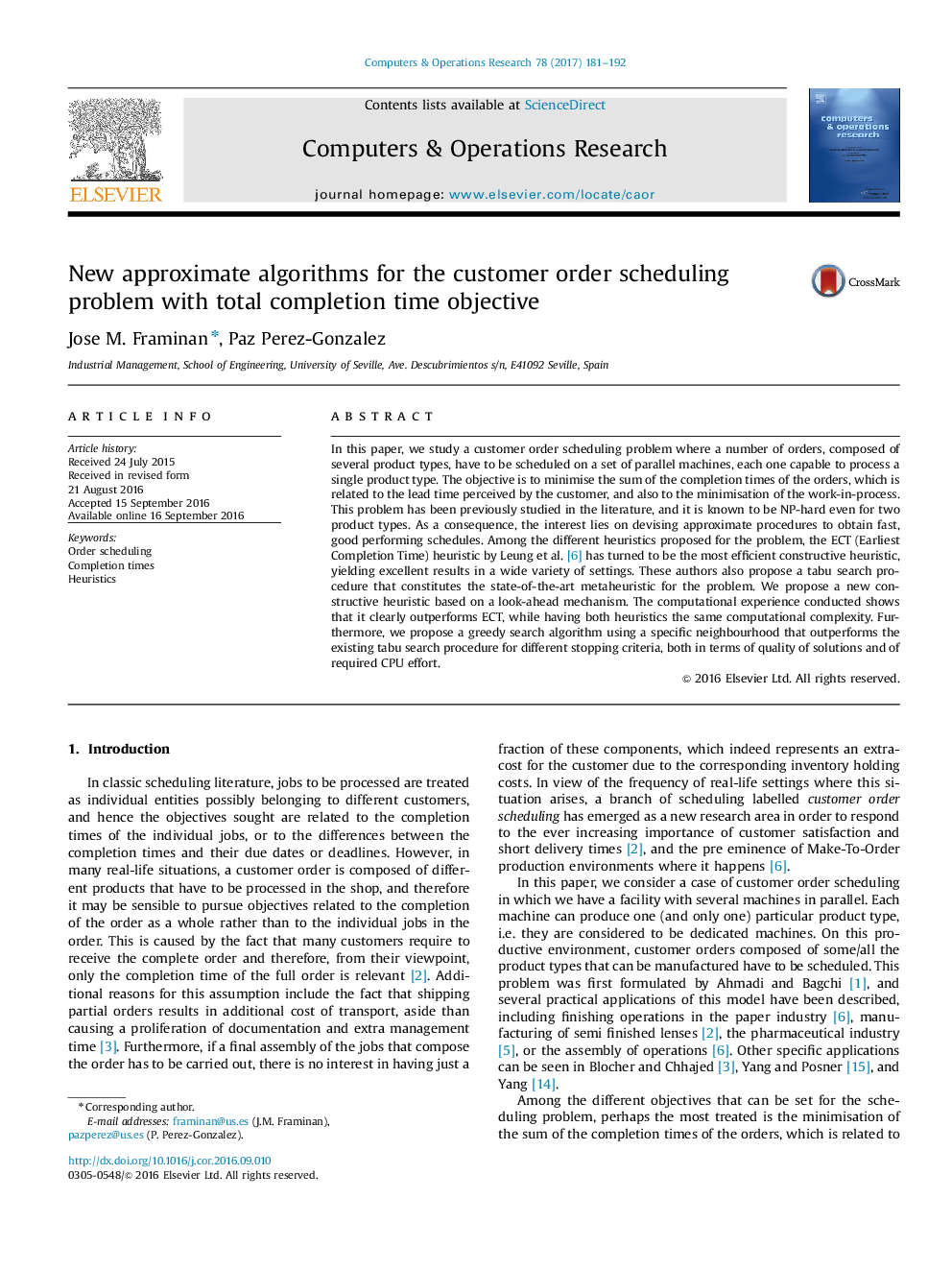ترجمه فارسی عنوان مقاله
الگوریتم تقریبی جدید برای برنامه زمانبندی نظم مشتری با هدف کل زمان تکمیل
عنوان انگلیسی
New approximate algorithms for the customer order scheduling problem with total completion time objective
| کد مقاله | سال انتشار | تعداد صفحات مقاله انگلیسی |
|---|---|---|
| 107565 | 2017 | 12 صفحه PDF |
منبع

Publisher : Elsevier - Science Direct (الزویر - ساینس دایرکت)
Journal : Computers & Operations Research, Volume 78, February 2017, Pages 181-192
ترجمه کلمات کلیدی
سفارش برنامه ریزی، زمان تکمیل، اهریمنی،
کلمات کلیدی انگلیسی
Order scheduling; Completion times; Heuristics;

